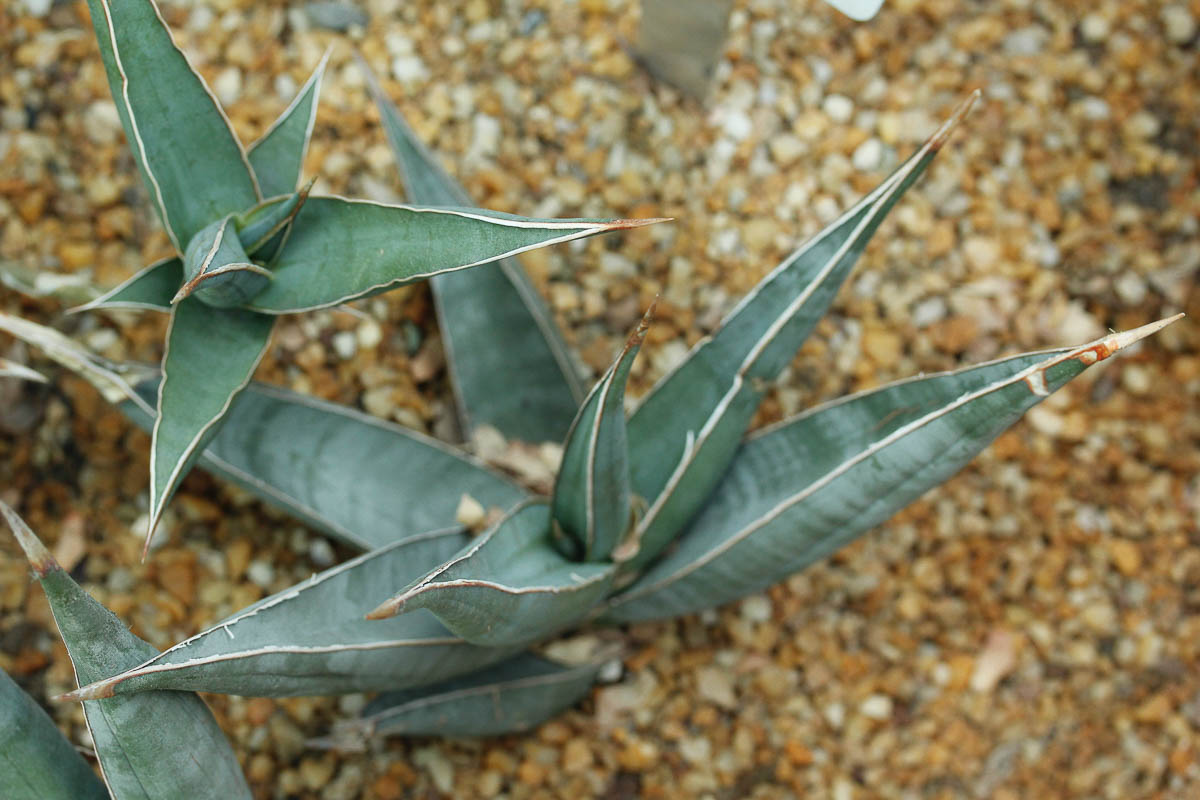Walking Sansevieria
Walking Sansevieria (Dracaena pinguicula)

Walking Sansevieria is a slow growing plant with thick attractive leaves can grow up to 30cm wide. When young, its thick, fleshy leaves are arranged in a rosette. As the plant matures, the leaf arrangement changes to two rows opposite each other. The leaves are bluish to grey with reddish margins. This plant is named as such because it will grow offshoots with stilt-like roots that resemble legs walking away from the parent plant.
A perennial, succulent shrub, Walking Sansevieria is good for planting in containers, either on its own or as part of a succulent dish garden.
Sun and soil needs:
Walking Sansevieria thrives in 4-6 hours of indirect sunlight, but may burn in direct sun. Plants do best in pots with sandy soil at least 10cm deep.
Growing:
Walking Sansevieria are slow-growing and does not need frequent fertilising. A balanced slow releasing fertiliser every 6 months would be sufficient.
This plant requires very little water and is vulnerable to root rot. Consider bottom watering this plant once every two weeks or less to reduce the chances of rot.
As with all potted plants, regular repotting once a year will prevent it from becoming root bound.
Propagation:
Walking Sansevieria can be propagated by leaf cuttings or dividing its offshoots.
Common problems & solutions:
This plant is largely resistant to most pests.
This plant is susceptible to root rot if grown in waterlogged soil. To prevent rot, grow the plant in sandy soil with plenty of inorganic soil amendments. Plants can also be bottom watered once a week or less to keep the soil airy.
Mealy Bugs often infest the plant if it has underlying problems like root rot. Mechanical pest control methods like pruning the infested parts are the best methods for managing these pests in the short term, but resolving the underlying problem will prevent them in the long term.

